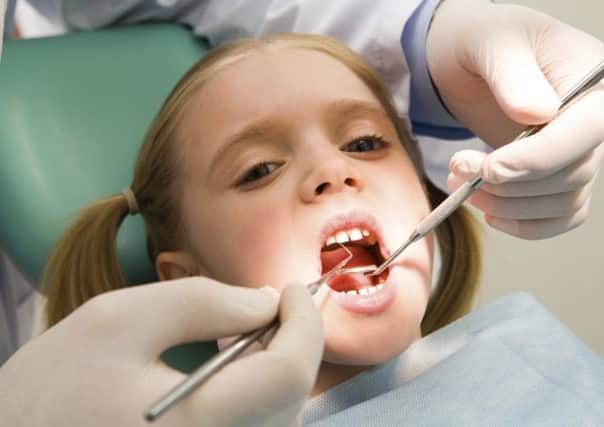Revealed: worst areas for children's teeth decay


Just under a fifth of the 859 five-year-olds surveyed in Portsmouth – 18.1 per cent –had tooth decay.
But that is an improvement from the same survey in 2012 which showed a quarter of children suffered from it.
Advertisement
Hide AdAdvertisement
Hide AdChildren in Southampton had the worst teeth in the area, with more than a third of the 1,155 five-year-olds surveyed showing decay.
Dr Janet Maxwell, director of public health at Portsmouth City Counci, said: ‘Any improvement in young children’s dental health is very welcome, although the way this information is collected has changed, so we need to look at these figures with a little caution.
‘Our work mainly involves spreading the word about keeping teeth healthy, to school and nursery children and their families.’
She said the advice to keep teeth healthy is:
· Keep sugary foods and drinks to meal times only
· Water and milk are the best drinks for infants and children
Advertisement
Hide AdAdvertisement
Hide Ad· Have 6 monthly dental check-ups from at least when a baby’s tooth first appears
· Supervise children until they are 7, to brush their teeth twice a day, especially at bedtime
· Use a pea sized amount of fluoridated toothpaste - and encourage them to spit, not rinse after brushing.
In Gosport the figure was 7.6 per cent of the 233 surveyed, compared to 16 per cent previously, and in Havant it was 17.4 per cent of 256 children, compared to 28.5 per cent in 2012.
Advertisement
Hide AdAdvertisement
Hide AdChildren in East Hampshire have the healthiest teeth, with just 11 per cent of those surveyed having tooth decay.
That is down from 18.9 per cent in the 2012 survey.
And 11.7 per cent of children in Fareham had decays, down from 12.1 per cent.
The regional average in the South East is 20 per cent – with the national average at just under a quarter of all five-year-olds.